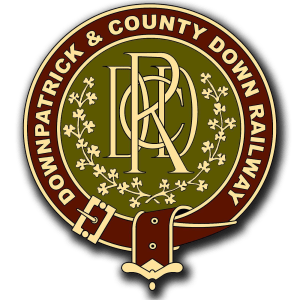It’s not everyday that Traffic reports tell drivers to watch out for the railway engine travelling down the M1 and M2 motorways, but that’s the sight that motorists saw last Sunday as a steam locomotive “travelled home” to the Downpatrick & County Down Railway, Northern Ireland’s volunteer run full-size heritage railway.
Steam locomotive No. 1, built by the German firm Orenstein & Koppel, was being taken from the Railway Preservation Society of Ireland’s workshops at Whitehead, after going up there in 2004.
It’s taken two decades of work and funding from the Heritage Lottery Fund (for a new boiler, as the old one had corroded so badly it had to be scrapped) Interreg, as well a substantial amount from the DCDR’s own funds. Work on its restoration was undertaken in a joint effort by the DCDR and the RPSI over that twenty years, such a long period as the locomotive was in an incredibly poor condition after it was saved from lying in a County Down field in the 1980s.
No. 1 is one two sister engines at the DCDR, and was built in the mid 1930s by Berlin-based Orenstein and Koppel for the Irish Sugar Company (Comlucht Suicre Eireann) for use in their factories at Mallow, Thurles and Tuam. There were a total of nine of these engines built (three for each factory) and they were used to transfer sugar beet wagons from the main line sidings in the factory complexes for processing.
Even though German built, they are also a legacy of early post-partition Ireland, as normally Irish firms would have ordered new locomotives from Great Britain, but de Valera’s Irish Free State was engaged in an “economic war” with the UK and so the order went to Germany instead, leading to these very continental looking locomotives appearing on the Emerald Isle.
It is believed that the last time No. 1 was steamed was in 1958.
After withdrawal from service, in 1960 the engines were sent to Dalkey Station, south of Dublin, for storage with a view to being moved to England for preservation. This project did not work out (due to the key players finding out that the width between the rails in Ireland is different to that in England!) and the locomotives were moved to Ballynahinch Junction for storage in 1978, as part of an attempt to resurrect this branch line as a heritage line. When this scheme failed to get off the ground the locomotives were purchased from their owner and moved to Downpatrick a decade later in the late 1980s.

The move also saw us say farewell to “RH Smyth”, aka Harvey, who was returned to the RPSI depot at Whitehead
After a period of storage in Downpatrick, work began on rebuilding No. 1 while No. 3 was restored at the RPSI’s workshop in Whitehead. No. 3 was returned to service on Saturday 2nd October 2000, and is currently dismantled for a full ten-year boiler inspection, and it is hoped to return No. 3 to traffic as well ASAP.
A new boiler was fabricated by Woolf Engineering, and No. 1 was moved to Whitehead in 2004 for completion of its restoration. While No. 1 will be “chuffed” to see Santa this December, running all four weekends of the DCDR’s Lapland Express services (subject to running in trails), it is hoped when the loco is fully painted that it will be given a “proper” homecoming celebration some time early next year.
It will also be the first time in No.1’s life that it will have hauled passengers, instead of wagons full of sugar beet.
Our thanks to everyone who donated money for the restoration of this locomotive for our “Steamed Up” appeal, and remember donations are still needed to get No. 3 back up and running – see our donations webpage.


